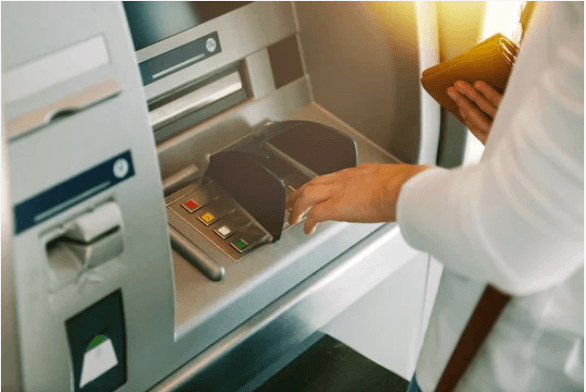
ATMs offer convenience, but sometimes transactions don’t go as planned. One of the most frustrating scenarios is when an ATM fails to dispense cash, yet the amount gets debited from your account. Don’t panic! In most cases, banks will reverse the transaction automatically. However, if that doesn’t happen, follow these steps to resolve the issue quickly.
Common ATM Transaction Scenarios
Scenario 1: Successful Transaction
You visit the ATM, insert your debit card, enter your PIN, and withdraw cash successfully. Great! Your work is done.
Scenario 2: Transaction Declined (No Debit)
You insert your card, enter your PIN, but the transaction gets declined. Since no money is deducted from your account, you can either try again after some time or use a different ATM. Check your account balance to ensure sufficient funds.
Scenario 3: Transaction Declined, But Account Debited
This is the problematic case where the ATM doesn’t dispense cash, but your account gets debited. This can happen due to a technical glitch, insufficient cash in the ATM, or, in rare cases, fraud.
Why Does This Happen?
- ATM Malfunction: The machine may not register the transaction details correctly.
- Out of Cash: The ATM may have run out of cash before processing your request.
- Fraudulent Activity: Skimming devices attached to ATMs can steal card details. Always inspect the card slot before inserting your card.
Immediate Actions
- Check SMS & Bank Statement: Confirm that the amount was debited by checking your SMS alerts or bank statement.
- Wait for Automatic Reversal: Many banks automatically reverse failed ATM transactions within 24 hours (for the same bank) or 5 working days (for other banks’ ATMs).
Steps to Get Your Money Back
1. Wait for Automatic Reversal
In most cases, the bank’s system detects the error, and the transaction is reversed within 24 hours (same bank ATM) or 5 working days (other bank’s ATM). You will receive an SMS confirming the reversal.
2. Keep the Transaction Slip or Bank Statement
If the reversal doesn’t happen automatically, keep your transaction slip or check your bank statement for the transaction reference number. You’ll need this when filing a complaint.
3. Contact Customer Care
- Call your bank’s customer care helpline (usually found on the back of your debit card).
- Provide your transaction details (date, time, ATM location, and reference number).
- The representative will raise a complaint and provide a tracking number.
- Banks typically resolve such cases within 7 working days as per RBI guidelines.
4. Visit Your Bank Branch
If customer care doesn’t resolve your issue, visit the nearest branch and file a written complaint. The helpdesk will escalate your issue and guide you through the resolution process.
5. Escalate to the Bank’s Grievance Cell
If your complaint remains unresolved, escalate it to the branch manager or the bank’s grievance cell through the official website. Provide all necessary details and request urgent action.
6. File a Complaint with the Banking Ombudsman
If your money isn’t refunded within 30 days, you can file a complaint with the Reserve Bank of India (RBI) Ombudsman through the RBI Complaint Management System. The Ombudsman will investigate and ensure a fair resolution.
7. Approach the Consumer Court (NCDRC)
If your issue remains unresolved, you can escalate it to the National Consumer Disputes Redressal Commission (NCDRC) under the Consumer Protection Act, 1986.
8. Seek Legal Action (If Necessary)
In extreme cases, if all other steps fail, consult a legal expert to take further action.
How to Prevent ATM Transaction Issues?
- Inspect the ATM: Look for any unusual attachments on the card slot before inserting your card.
- Choose Secure ATMs: Use ATMs located inside banks or well-lit, monitored areas.
- Enable Transaction Alerts: Always keep SMS and email alerts active to track transactions in real time.
- Use UPI/Digital Payments When Possible: Digital payments reduce dependency on cash withdrawals.
Frequently Asked Questions (FAQ)
1. How long does it take for a failed ATM transaction to be reversed?
Banks usually reverse such transactions within 24 hours for the same bank’s ATM and 5 working days for other banks’ ATMs.
2. What should I do if my ATM transaction fails but my account is debited?
First, wait for an automatic reversal. If that doesn’t happen, contact your bank’s customer care with the transaction details and file a complaint.
3. Can I get my money back if the ATM was out of cash?
Yes. The bank will detect the error and reverse the transaction automatically within a few working days.
4. How do I check if my ATM card was skimmed?
Look for unusual attachments on the card slot before inserting your card. If your card gets stuck or the ATM looks suspicious, avoid using it.
5. Can I file a legal case if my money is not refunded?
Yes. If your issue remains unresolved after approaching the bank, RBI Ombudsman, and NCDRC, you can seek legal action.
6. Will my bank notify me once the transaction is reversed?
Yes, you will receive an SMS or email confirmation once the reversal is processed.
7. Can I use mobile banking to report a failed ATM transaction?
Most banks allow you to raise complaints through their mobile banking app or website’s grievance section.
Final Thoughts
While failed ATM transactions can be stressful, banks usually resolve them quickly. Following these steps ensures you get your money back without hassle. Stay informed, stay cautious, and take immediate action when necessary.
Have you ever faced this issue? Share your experience in the comments below!
For more financial insights and banking tips, stay tuned to Banking Insights!


